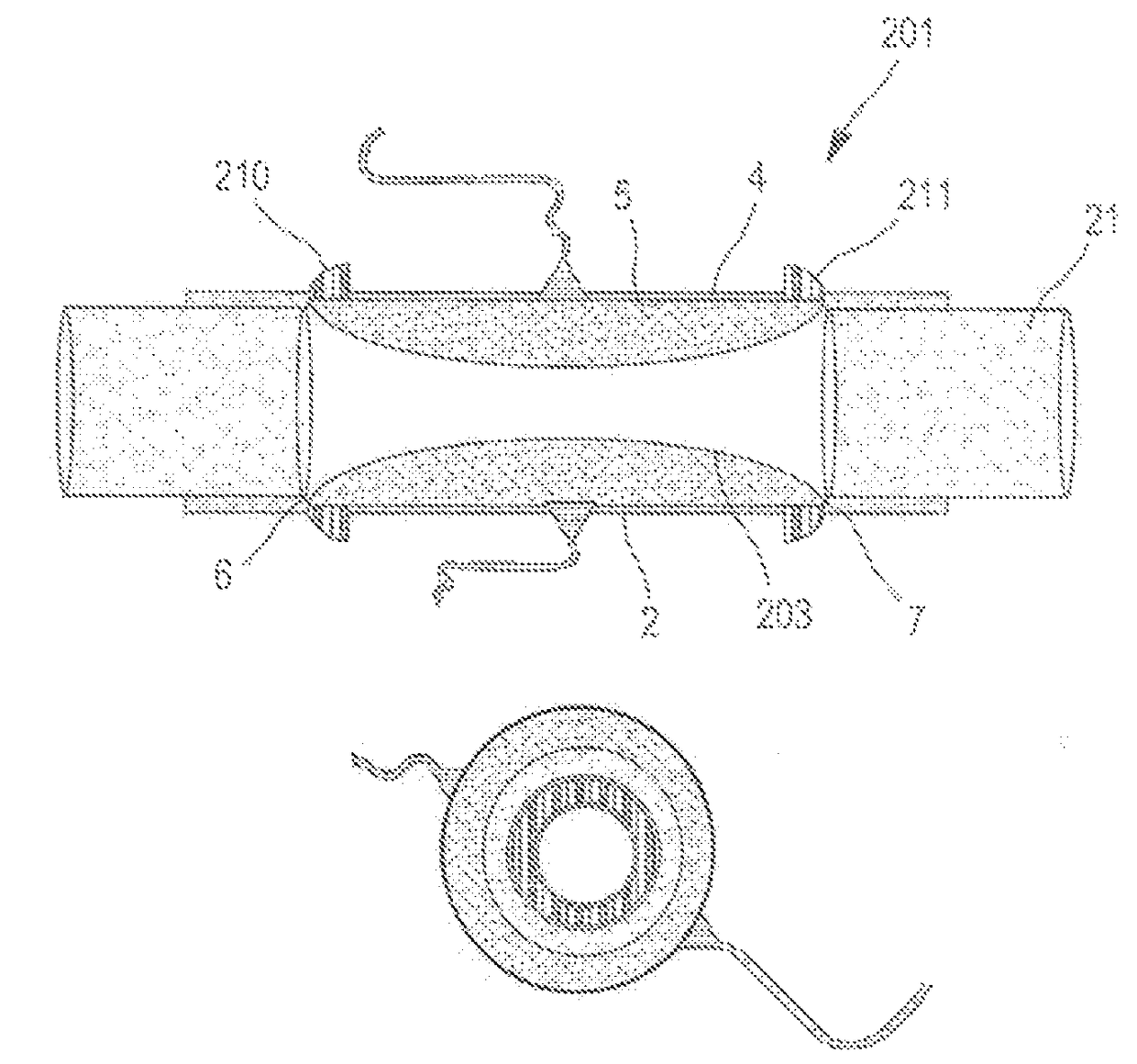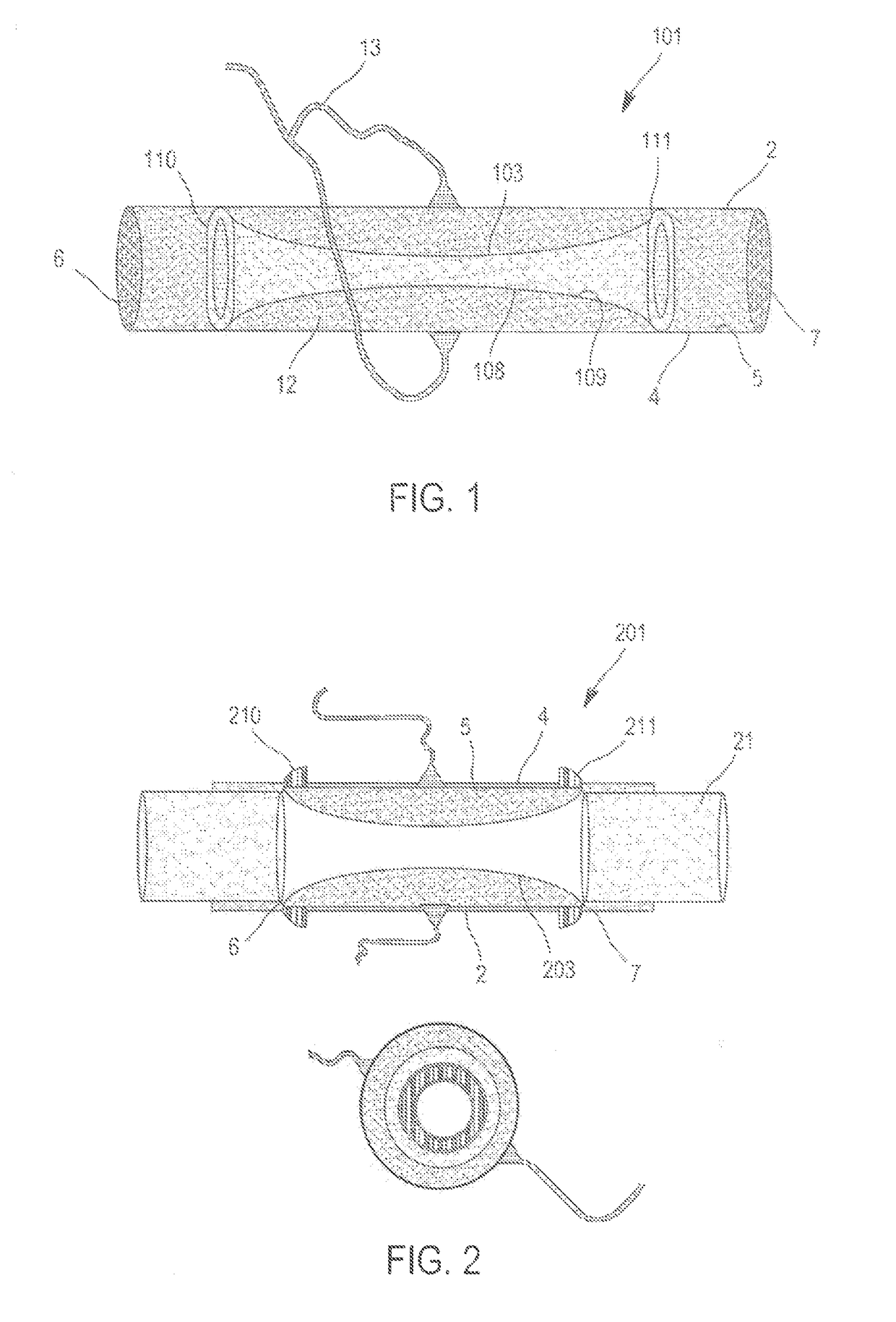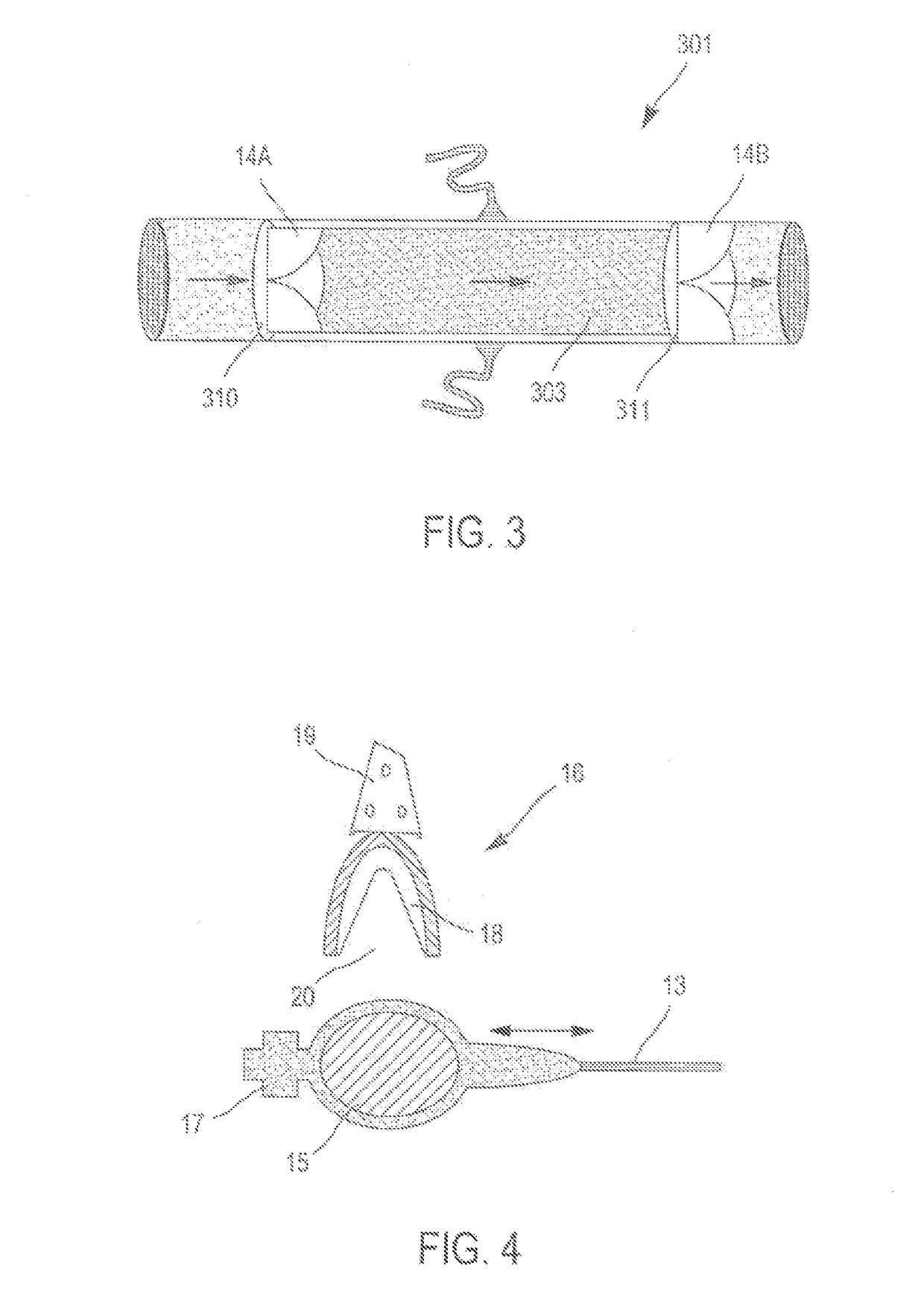Pulsatile medical device designed to be used in extracorporeal surgery
a medical device and pulsatile technology, applied in the field of pulsatile medical devices, can solve the problems of high probability of clot formation, difficult situations, postoperative hemodynamic disorders, etc., and achieve the effects of minimizing the head loss of pulsatile flow, low cost, and convenient availability
- Summary
- Abstract
- Description
- Claims
- Application Information
AI Technical Summary
Benefits of technology
Problems solved by technology
Method used
Image
Examples
first embodiment
[0085]FIG. 1 shows a pulsatile medical device 101 of the invention. The device comprises an external pipe 2 in which an internal pipe 103 is inserted. The internal pipe 103 is a compressible pipe made of flexible biocompatible material, such as polyurethane, for example. The external pipe 2 is more rigid, e.g. being made of polyvinyl chloride (PVC) and serves as an outer shell.
[0086]The external pipe 2 has an outside wall 4, an inside wall 5, a first end 6 for connection to an ECC type machine, for example, and a second end 7 for connection to the body of a patient. The internal pipe 103 also has an outside wall 108 and an inside wall 109 as well as ends 110 and 111. The internal pipe 103 in FIG. 1 is shorter than the external pipe 2, and the zone where both pipes 2 and 103 are present is a zone referred to as a “two-lumen” zone. In the embodiment of FIG. 1, the ends 110 and 111 of the internal pipe 103 are fastened around their entire periphery to the inside wall 5 of the external ...
second embodiment
[0090]FIG. 2 shows the pulsatile medical device 201 that is identical with the embodiment of FIG. 1 except that the internal pipe 203 is as long as the external pipe 2, thus making its possible to use a different configuration for the ends 210 and 211 of the internal pipe 203. These ends are not fixed to the inside wall 5 of the external pipe 2, but rather to the outside wall 4 of the external pipe 2 by being folded over. This pulsatile medical device 201 is then fastened at each of its two ends 6 / 210 and 7 / 211 to standard ECC connector ports 21 via couplings so as to avoid intravascular accidents in the event of fluid leakage.
third embodiment
[0091]FIG. 3 shows the pulsatile medical device 301 in which two unidirectional type valves 14A and 14B are placed at the ends 310 and 311 of the internal pipe 303.
[0092]The presence of these valves 14A and 14B makes it possible to obtain a unidirectional blood flow (represented by arrows), thereby reducing vortex effects and head losses.
[0093]FIG. 4 shows an example of an appliance for creating pulsations through the pulsatile medical device of the invention. The appliance comprises:[0094]a first portion including a pouch 15 filled with fluid and connected at one end to the connector port 13 and its other end to an anti-reflux valve 17 enabling the pouch 15 to be filled with fluid or to be emptied; and[0095]a second portion constituted by means 16 for compressing said pouch 15 and comprising a pouch compressor compartment 18 and a control 19, e.g. electromechanical, for controlling said compressor compartment 18. The compressor compartment 18 has a recess 20.
[0096]In operation, the...
PUM
 Login to View More
Login to View More Abstract
Description
Claims
Application Information
 Login to View More
Login to View More - R&D
- Intellectual Property
- Life Sciences
- Materials
- Tech Scout
- Unparalleled Data Quality
- Higher Quality Content
- 60% Fewer Hallucinations
Browse by: Latest US Patents, China's latest patents, Technical Efficacy Thesaurus, Application Domain, Technology Topic, Popular Technical Reports.
© 2025 PatSnap. All rights reserved.Legal|Privacy policy|Modern Slavery Act Transparency Statement|Sitemap|About US| Contact US: help@patsnap.com



